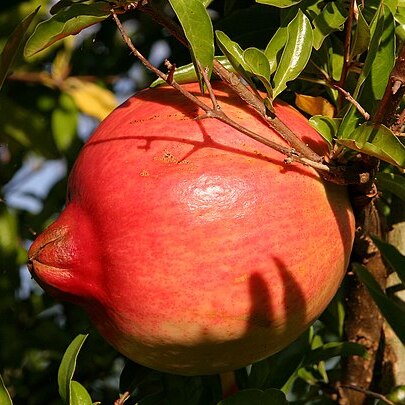Shrubs or small trees; branches often terminating as spines. Leaves opposite or subopposite, sometimes crowded on short lateral shoots, simple, entire, estipulate. Flowers solitary, terminal or 1-5 in axillary or terminal clusters, actinomorphic, bisexual. Floral tube thick, leathery, adnate to ovary and produced above it; sepals thick, valvate, persistent. Petals showy, red [or white], strongly crumpled. Stamens numerous, covering inner surface of floral tube from rim to ovary. Ovary inferior, multiloculed; style exserted; stigma capitate. Fruit berrylike, with leathery rind, retaining a crown of sepals. Seeds many, with translucent, juicy sarcotesta; cotyledons spirally rolled.
Small trees or shrubs, branchlets sometimes spinescent. Leaves usually opposite or fasciculate, simple, entire, without stipules. Flowers terminal, solitary or a few clustered, actinomorphic, bisexual, with a thick textured hypanthium. Calyx thick, adnate to top of the hypanthium; lobes 5–7 (8) , valvate. Petals 5–7 (8), imbricate, crumpled in bud. Stamens numerous, attached over inner face of hypanthium. Ovary inferior, 7–9 (–13)-locular, with thick placentas; placentation basically axile; style simple, slender; stigma capitate. Fruit a spherical berry, with a leathery rind, crowned with persistent calyx. Seeds numerous.

